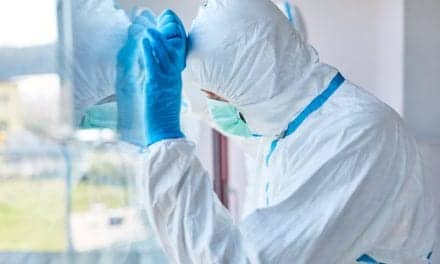By Aine Cryts
Hearing about healthcare workers who are tired and stressed isn’t surprising these days, but for radiologists in particular, it’s old news. According to Medscape Radiologist Lifestyle, Happiness, & Burnout Report 2020, released in February 2020, only 23% of radiologists reported that they were happy or extremely happy in their work, and 30% reported that they were burned out and 2% were depressed. (The survey included 15,181 U.S. physicians across more than 30 specialties who responded to an online questionnaire between June and September of 2019.)
The top four factors cited as contributors to radiologist burnout were: spending too many hours at work (50%); lack of respect from administrators, employers, colleagues, or staff (44%); feeling “just like a cog in a wheel” (37%); and too many bureaucratic tasks, such as charting and paperwork (31%).
Mayo Clinic has been studying the topic of physician burnout for many years, Ron Menaker, EdD, administrative partner of the department of radiology in the Midwest, tells AXIS Imaging News. The Mayo Clinic offers these tips for reducing radiologist burnout.
Pick the right physician leaders and provide leadership training.
Physician supervisors’ leadership qualities seem to impact the well-being and satisfaction of individual physicians, according to a study published in Mayo Clinic Proceedings. “These findings have important implications for the selection and training of physician leaders and provide new insights into organizational factors that affect physician well-being,” wrote the study’s co-authors.
The good news: The researchers found that many of the leadership qualities they studied are teachable. These qualities include keeping people informed, encouraging reports to suggest ideas for improvement, having career development conversations, providing feedback and coaching, and recognizing a job well done.
Let radiologists focus on patients.
Matthew Callstrom, MD, PhD, chair of the department of radiology in the Midwest for Mayo Clinic, says his organization has “spent a lot of energy making sure providers deliver medicine to patients in a very effective way.”
Burnout is reflective of different things such as radiologists not feeling empowered to make decisions about patient care and challenges managing administrative duties, Callstrom tells AXIS. It’s important to help radiologists return to the joy of practicing medicine, he adds.
Embrace the lean process methodology.
Menaker says that Mayo Clinic has adopted the lean process methodology to reduce radiologist burnout. A product of the manufacturing industry, the lean process methodology focuses on eliminating resources that don’t create value for the end customer, in this case, the patient.
Optimizing use of the electronic health record (EHR) by minimizing clicks and teaching physicians how best to access images and notes is a manifestation of this work, says Menaker.
Callstrom explains the relevance of this EHR work to radiologists in this way: It starts when a referring clinician orders an MRI of the abdomen, he says, pointing out that there are many variations of studying an MRI of the abdomen. For example, the radiologist may need to focus on the liver or the kidneys.
What the radiologist is concerned about is the clinical question that needs to be answered. Those clinical questions are integrated into Mayo Clinic’s EHR, he says. That ensures that the appropriate study is performed and details such as allergy to contrast or the existence of an implanted device are clear in the patient record.





